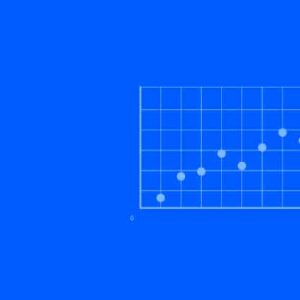
5-Point Likert Scale
Is 5-Point Likert Scale a Better Choice to use? SHARE THE ARTICLE ON Table of Contents Before learning more about the Likert scale, let us

Find the best survey software for you!
(Along with a checklist to compare platforms)
Take a peek at our powerful survey features to design surveys that scale discoveries.
Explore Voxco
Need to map Voxco’s features & offerings? We can help!
Find the best customer experience platform
Uncover customer pain points, analyze feedback and run successful CX programs with the best CX platform for your team.

We’ve been avid users of the Voxco platform now for over 20 years. It gives us the flexibility to routinely enhance our survey toolkit and provides our clients with a more robust dataset and story to tell their clients.
Steve Male
VP Innovation & Strategic Partnerships, The Logit Group
Explore Regional Offices

Find the best survey software for you!
(Along with a checklist to compare platforms)
Take a peek at our powerful survey features to design surveys that scale discoveries.
Explore Voxco
Need to map Voxco’s features & offerings? We can help!
Find the best customer experience platform
Uncover customer pain points, analyze feedback and run successful CX programs with the best CX platform for your team.

We’ve been avid users of the Voxco platform now for over 20 years. It gives us the flexibility to routinely enhance our survey toolkit and provides our clients with a more robust dataset and story to tell their clients.
Steve Male
VP Innovation & Strategic Partnerships, The Logit Group
Explore Regional Offices

Find the best survey software for you!
(Along with a checklist to compare platforms)
Take a peek at our powerful survey features to design surveys that scale discoveries.
Explore Voxco
Need to map Voxco’s features & offerings? We can help!
Find the best customer experience platform
Uncover customer pain points, analyze feedback and run successful CX programs with the best CX platform for your team.

We’ve been avid users of the Voxco platform now for over 20 years. It gives us the flexibility to routinely enhance our survey toolkit and provides our clients with a more robust dataset and story to tell their clients.
Steve Male
VP Innovation & Strategic Partnerships, The Logit Group
Explore Regional Offices
SHARE THE ARTICLE ON

In statistics, a sample refers to a subset of a larger population. The sample allows researchers to conduct their study on a part of their target population so that they can work with manageable data in a timely and cost-effective manner.
However, the true power of a sample lies in its ability to represent the larger population. To acquire data that is generalizable to your target population, it is crucial to select a sample group that mirrors the characteristics of your target population.
A representative sample will have the same composition as that of the larger population. However, when researchers fail to select a target population that is representative, it results in sampling error.
Don’t miss out on this opportunity to elevate your research game
It is a statistical error that occurs when a researcher fails to select a sample representative of the entire population. When sampling error occurs, the results obtained from the sample are not reflective of the results that would be obtained from the target population itself. This can lead to misleading conclusions and less generalizable findings, highlighting the importance of avoiding sampling errors.
The only way to completely eliminate sampling error from a study is to observe every element in a population, which is not feasible and is even impossible in some cases. Therefore, sampling error cannot be completely avoided, as no sample will ever be fully representative of the target population.
However, by understanding sampling error, we can estimate its size and take measures to minimize it, making our study’s findings as generalizable to the larger population as possible.
We can categorize the errors in statistical analysis into two main types: sampling errors and non-sampling errors. Each type of error has unique characteristics and sources. Understanding these two types and the key identified can help you recognize them and mitigate their impact.
1. Sampling errors:
This occurs due to a discrepancy in a sample of population that is used to estimate the characteristics of entire population. It happens due to the fact that a sample may not be an accurate representation of the target population.
Key identifiers of sampling errors include:
A. Sample size:
A larger sample size ensures a more precise estimate and representation of the entire population. While, smaller sample sizes tend to generate outcomes with greater variability.
B. Sampling bias:
This occurs when the sampling method you use systematically favors a certain outcome. For instance, if you gather household income data from rural population and exclude urban demography, the outcome will over-represent low-income household. This leads to an inaccurate representation.
C. Sampling frame errors:
This error can arise if your sampling frame does not represent the target population. For example, if your sampling frame excludes a certain demographic, you will not be able to generalize the data from the resulting sample to the entire population of interest.
Non-sampling errors:
This type of error is unrelated to the sampling process. However, it can still affect the research outcomes. The errors in this category arise at any stage of data collection or analysis.
A. Measurement errors:
This occurs when there are inconsistencies in the data collection. This can happen due to human error in data entry or ambiguous questions.
B. Non-response:
This occurs when participants do not respond to the survey. It can occur if certain groups are more likely to participate in the survey.
C. Coverage errors:
This can happen if you exclude a certain group of individuals within the target population from your sampling frame.
D. Response errors:
It can occur when respondents, intentionally or unintentionally, provide you with misleading or inaccurate information.
10M verified professionals, 90+ profiling points, 20-30% savings, and so much more.
Sampling errors can be caused by a range of different causes. By understanding what causes sampling error, we can take measures to minimize it.
The following is a list of the most common types of sampling errors.
This occurs when the sample is selected from the wrong population data or if the sample doesn’t accurately represent the target population. This error generally includes targeting the wrong population segments or completely missing out on certain demographics within the correct segments.
Mitigate this type of sampling error by:
This error occurs when you systematically exclude a sample or participants who opt to participate in the study, and therefore, only those interested participate in the survey. This can lead to gathering biased opinions, resulting in distorted outcomes.
If researchers overlook respondents who didn’t initially respond, the outcome will not reflect the target market. If, instead, the researcher decides to follow up with the respondents who didn’t initially participate in the survey, the outcome is very likely to change.
Avoid selection error from harming your research findings by:
This is a type of sample design issue that is caused when a researcher fails to outline who they want to survey clearly and therefore, does not have a clear idea of their target population. When you don’t have a clearly defined target population, you may select inappropriate elements to be a part of your sample group.
Mitigate this type of sampling error by:
Non-response errors occur from the failure to obtain responses from all units in the selected sample group. The decrease in the sample size and amount of information collected will result in a larger standard error. Additionally, a bias is introduced at the risk of non-respondents differing from the respondents within the selected sample.
Address non-response errors by:
This type of sampling error arises when your sampling frame does not include all the relevant members of the population. It can occur due to outdated sources of samples or inadequate coverage of certain segments.
Mitigate coverage errors by:
To gain a deeper understanding of sampling error, let’s take a look at a real-life example where a study had a large sampling error. We will also take a look at what caused this sampling error.
In the 1936 presidential election, Alfred Landon, the Republican governor of Kansas, was pitted against the incumbent President, Franklin D. Roosevelt. At the time, Literary Digest was one of the most respected magazines and had accurately predicted the winners of multiple presidential elections within the previous decades.
For this election, Literary Digest conducted a poll about the election, and with the data collected, they predicted that Landon would win the election with 57% of the votes while Roosevelt will lose with 43%.
The actual outcome of the election was jarringly different, with 62% of the votes going to Roosevelt and 38% going to Landon.
In this case, the sampling error was a shocking 19% even though this was one of the largest and most expensive polls conducted by Literary Digest and had a sample size of around 2.4 million people.
This large sampling error was caused specifically by to sampling frame error, as the sample frame was from telephone directories and car registrations. However, at the time, many Americans did not own cars and phones, and the ones who did were largely Republicans. For this reason, the results wrongly predicted a Republican Victory.
The margin of error that is seen in survey results is an estimate of sampling error. The following formula can be used to calculate your sampling error:
The margin of error that is seen in survey results is an estimate of sampling error. The following formula can be used to calculate your sampling error:
Sampling Error= Z x (σ/n) | Z = Z score value based on the confidence interval (approx=1.96) σ = Population standard deviation n = Size of the sample |
It is important to note that as this value is simply an estimate, there is a small chance (5% or less) that the margin of error is more than what is stated in the report.
Related Read: How to Ensure Your Survey Delivers Better Results
Get our survey software buyer’s guide to find the best fit for you!
There are many different measures that can be taken to reduce the 5 types of sampling error.
Let’s explore a few of the most effective ways to do so:
When you select a larger sample size, it becomes closer to the actual population size. This makes the sample more representative of your target population and reduces the margin of error. It can help you ensure that all demographics or customer segments get the opportunity to share their opinion.
A large sample size empowers you with relevant, reliable, and accurate insights that you can generalize with the larger population.
You can reduce your sampling error by improving your sample design and accounting for the different sub-populations within your target population.
You can do this by utilizing probability or non-probability sampling methods, depending on your research objective and scope.
Probability sampling methods include:
Non-probability sampling methods include:
Before you select a sample, it is integral that you have a thorough understanding of your target population and its demographic mix. Study your target population well so that you can clearly and accurately outline who makes up your target population so that this subpopulation can be targeted effectively.
This bias can cause you to miss out on many insightful data and experiences. Addressing and mitigating non-response bias can help encourage authentic and reliable data collection. Take proactive measures like implementing follow-up surveys, sending survey reminders, offering incentives, and designing anonymous surveys to encourage respondents to participate.
It is crucial to minimize any errors during data collection and analysis to ensure your findings are reliable and valid. Pilot test your data collection process from survey questions, device-responsiveness, to the usability of the survey link, ensuring everything is error-free. Leverage survey software that offers secured data collection and maintains industry standards to ensure consistency and reliability.
Trusted by 450+ brands and top 50 MR firms in 40+ countries to gather, measure, uncover, and act on data.
Sampling error is the arch nemesis of research. It ruins the credibility of your research outcomes and leads to wasted effort. Thankfully, there are many ways to control and prevent this sampling error as mentioned in the article.
Stay cautious of these types of sampling errors to avoid them from sneaking into your research.

Is 5-Point Likert Scale a Better Choice to use? SHARE THE ARTICLE ON Table of Contents Before learning more about the Likert scale, let us

12 Best Practices for Conducting Customer Satisfaction Surveys SHARE THE ARTICLE ON Table of Contents Gather Reliable Market Research Data with Voxco Surveys Top 50

Correlation Coefficient Formula SHARE THE ARTICLE ON Table of Contents What is a Correlation Coefficient? A correlation coefficient is a statistical measure of the strength
Data Source : A Complete Guide SHARE THE ARTICLE ON Share on facebook Share on twitter Share on linkedin Table of Contents Introduction In data

December Feature Updates SHARE THE ARTICLE ON Share on facebook Share on twitter Share on linkedin At the end of another calendar year, we’re continuing
Tips to avoid employee survey fatigue SHARE THE ARTICLE ON Table of Contents Many organizations place a high value on employee engagement. As a result,
We use cookies in our website to give you the best browsing experience and to tailor advertising. By continuing to use our website, you give us consent to the use of cookies. Read More
| Name | Domain | Purpose | Expiry | Type |
|---|---|---|---|---|
| hubspotutk | www.voxco.com | HubSpot functional cookie. | 1 year | HTTP |
| lhc_dir_locale | amplifyreach.com | --- | 52 years | --- |
| lhc_dirclass | amplifyreach.com | --- | 52 years | --- |
| Name | Domain | Purpose | Expiry | Type |
|---|---|---|---|---|
| _fbp | www.voxco.com | Facebook Pixel advertising first-party cookie | 3 months | HTTP |
| __hstc | www.voxco.com | Hubspot marketing platform cookie. | 1 year | HTTP |
| __hssrc | www.voxco.com | Hubspot marketing platform cookie. | 52 years | HTTP |
| __hssc | www.voxco.com | Hubspot marketing platform cookie. | Session | HTTP |
| Name | Domain | Purpose | Expiry | Type |
|---|---|---|---|---|
| _gid | www.voxco.com | Google Universal Analytics short-time unique user tracking identifier. | 1 days | HTTP |
| MUID | bing.com | Microsoft User Identifier tracking cookie used by Bing Ads. | 1 year | HTTP |
| MR | bat.bing.com | Microsoft User Identifier tracking cookie used by Bing Ads. | 7 days | HTTP |
| IDE | doubleclick.net | Google advertising cookie used for user tracking and ad targeting purposes. | 2 years | HTTP |
| _vwo_uuid_v2 | www.voxco.com | Generic Visual Website Optimizer (VWO) user tracking cookie. | 1 year | HTTP |
| _vis_opt_s | www.voxco.com | Generic Visual Website Optimizer (VWO) user tracking cookie that detects if the user is new or returning to a particular campaign. | 3 months | HTTP |
| _vis_opt_test_cookie | www.voxco.com | A session (temporary) cookie used by Generic Visual Website Optimizer (VWO) to detect if the cookies are enabled on the browser of the user or not. | 52 years | HTTP |
| _ga | www.voxco.com | Google Universal Analytics long-time unique user tracking identifier. | 2 years | HTTP |
| _uetsid | www.voxco.com | Microsoft Bing Ads Universal Event Tracking (UET) tracking cookie. | 1 days | HTTP |
| vuid | vimeo.com | Vimeo tracking cookie | 2 years | HTTP |
| Name | Domain | Purpose | Expiry | Type |
|---|---|---|---|---|
| __cf_bm | hubspot.com | Generic CloudFlare functional cookie. | Session | HTTP |
| Name | Domain | Purpose | Expiry | Type |
|---|---|---|---|---|
| _gcl_au | www.voxco.com | --- | 3 months | --- |
| _gat_gtag_UA_3262734_1 | www.voxco.com | --- | Session | --- |
| _clck | www.voxco.com | --- | 1 year | --- |
| _ga_HNFQQ528PZ | www.voxco.com | --- | 2 years | --- |
| _clsk | www.voxco.com | --- | 1 days | --- |
| visitor_id18452 | pardot.com | --- | 10 years | --- |
| visitor_id18452-hash | pardot.com | --- | 10 years | --- |
| lpv18452 | pi.pardot.com | --- | Session | --- |
| lhc_per | www.voxco.com | --- | 6 months | --- |
| _uetvid | www.voxco.com | --- | 1 year | --- |